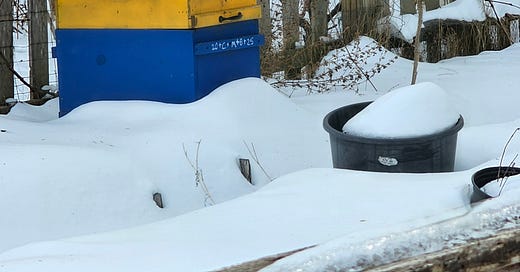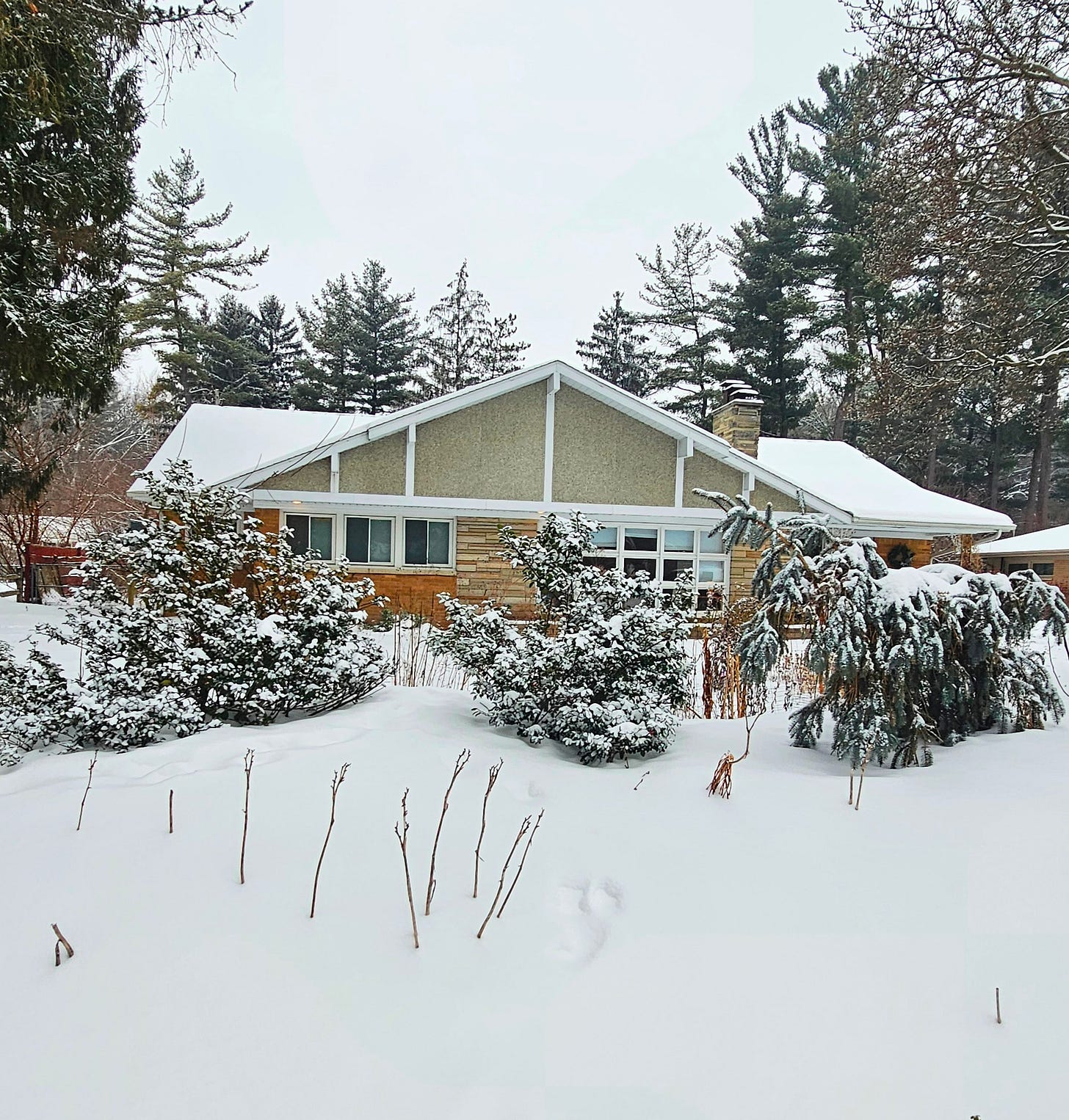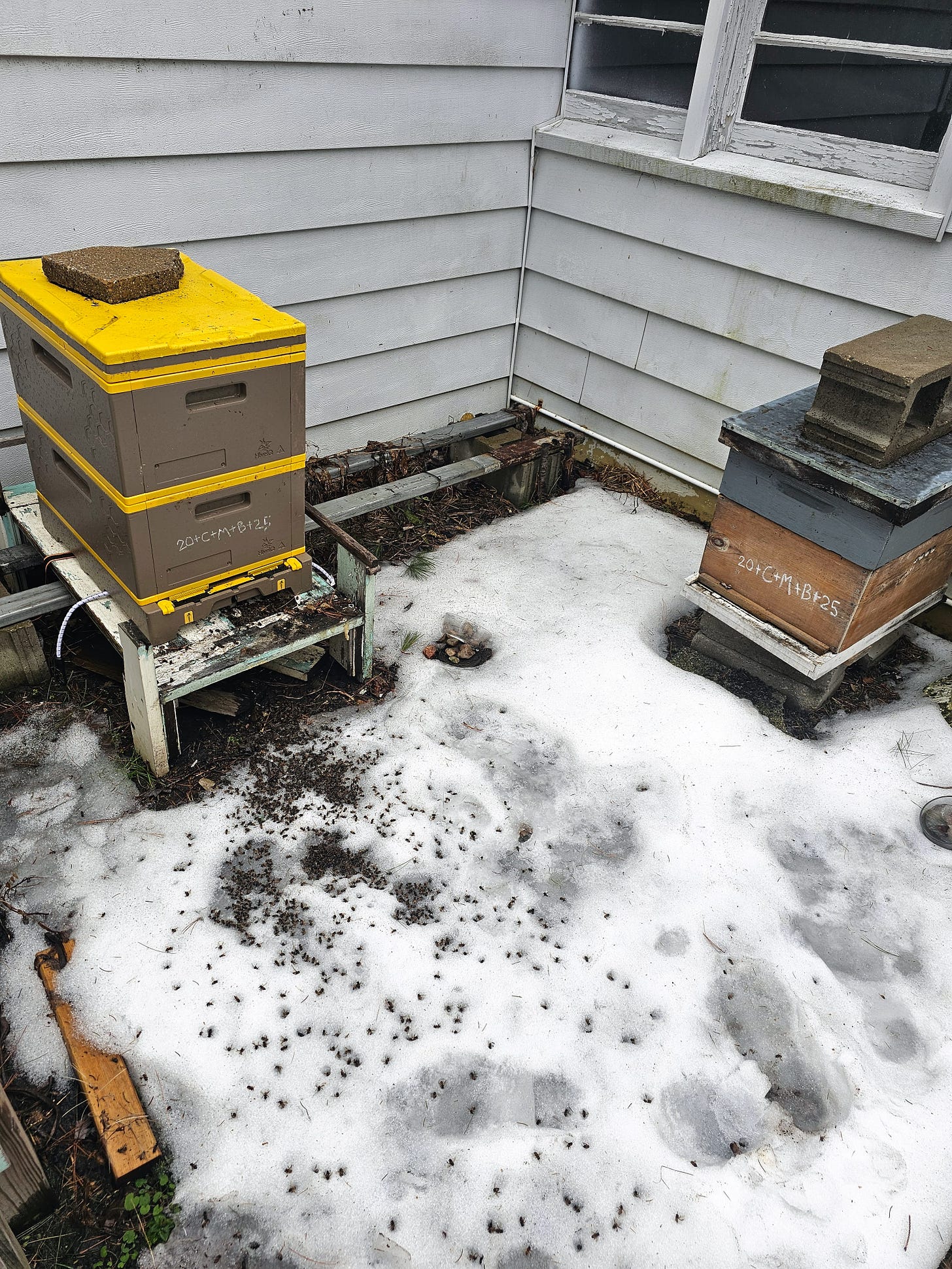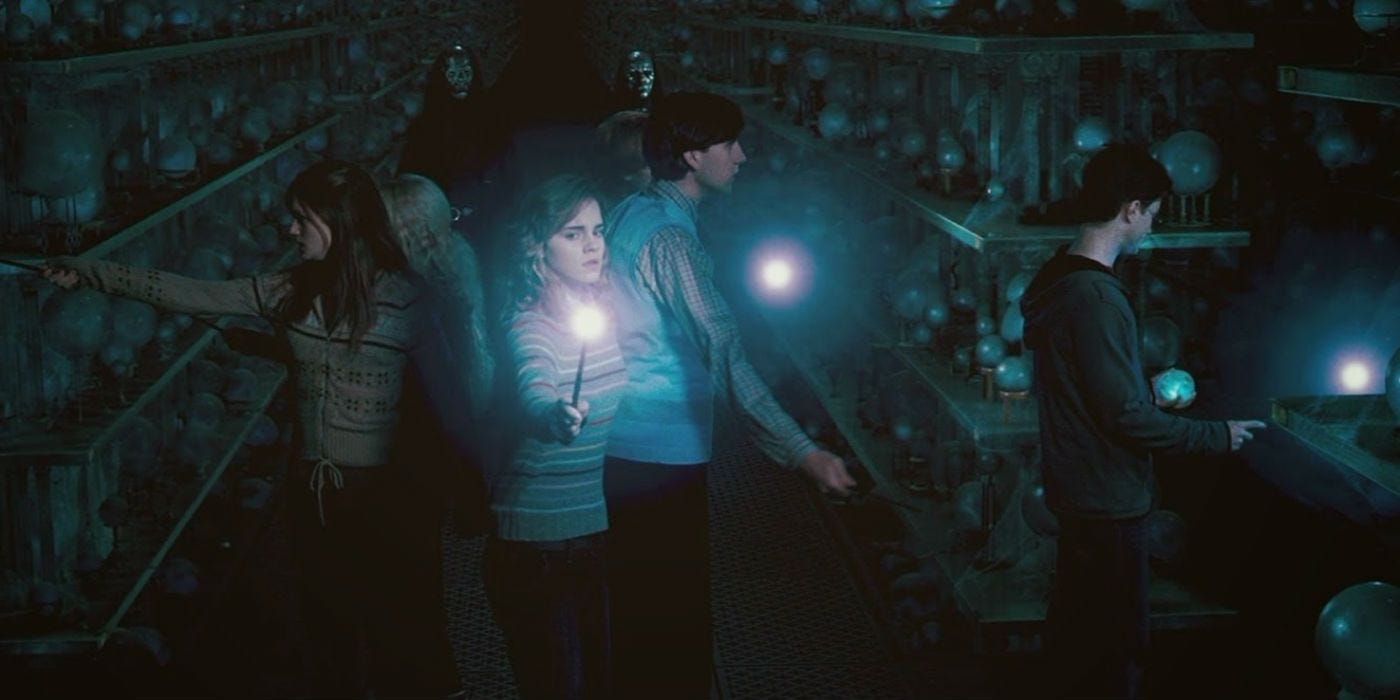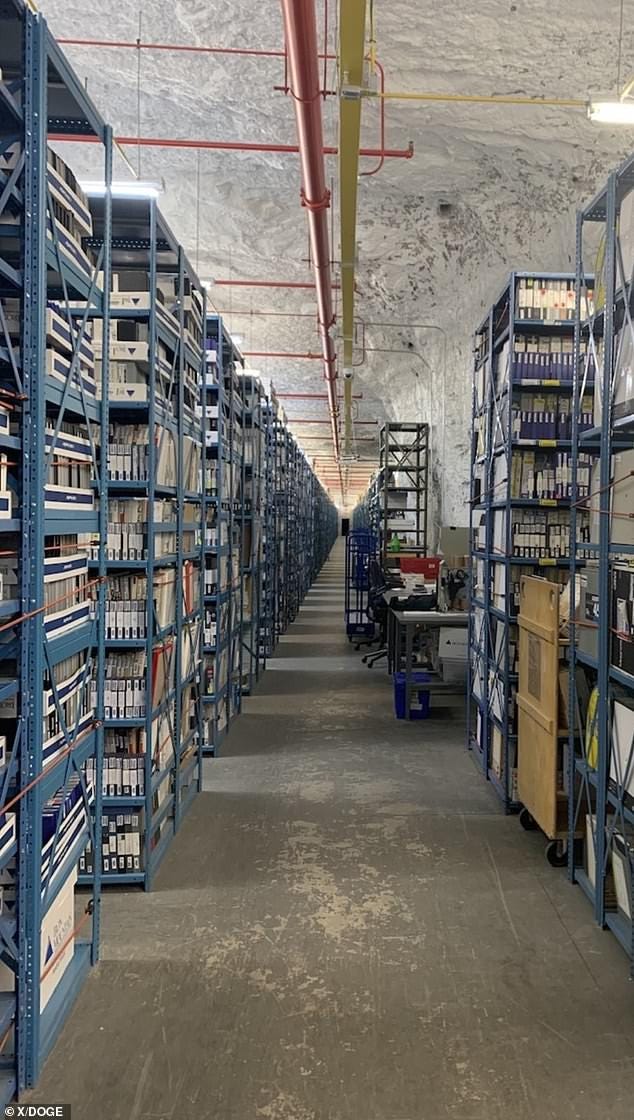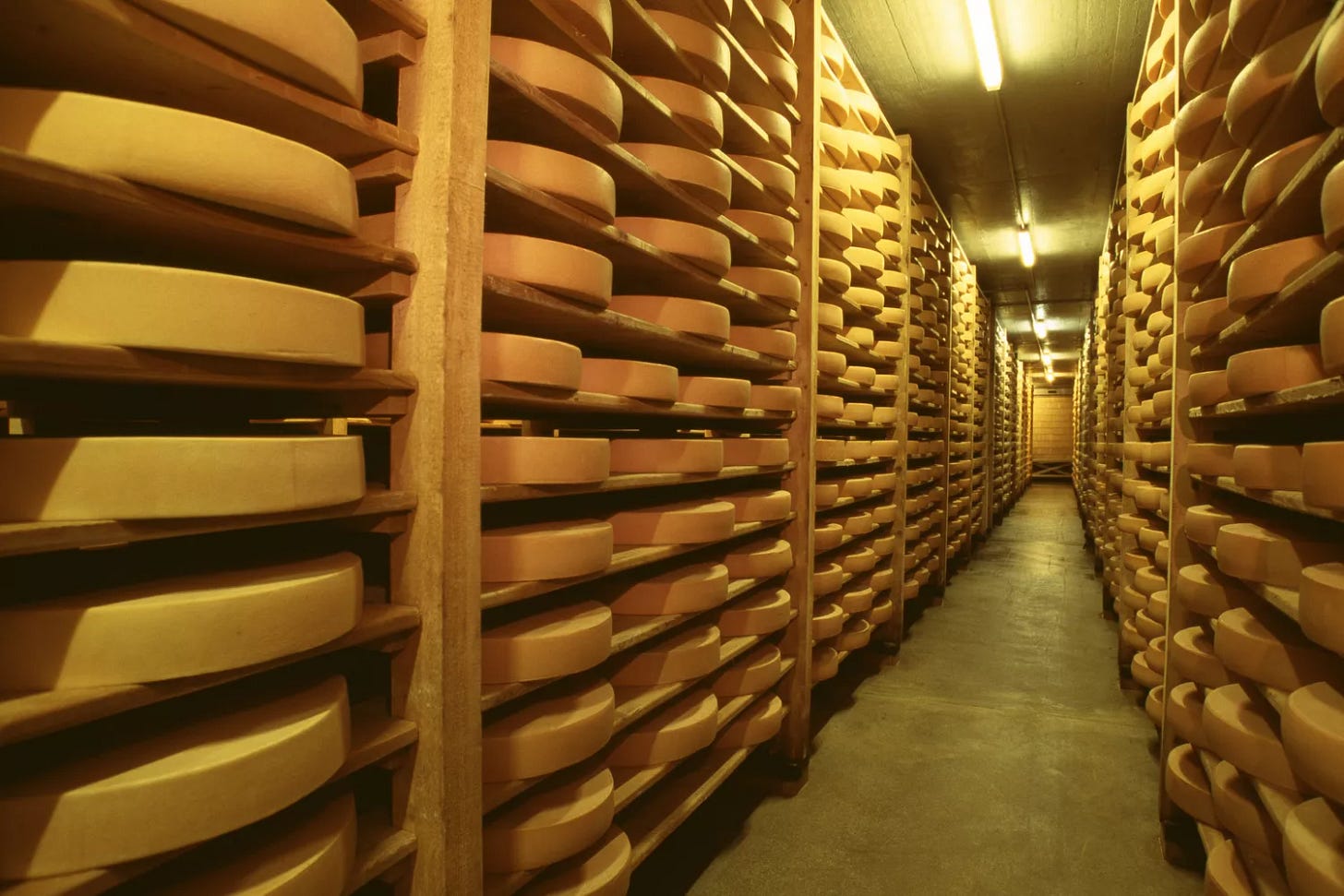First, Snow!
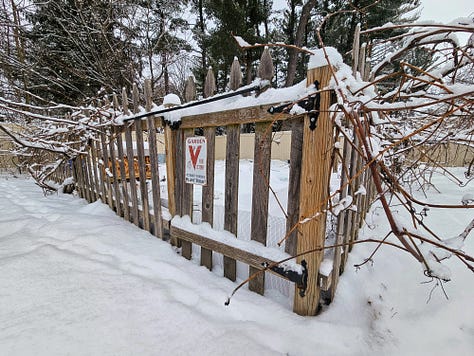
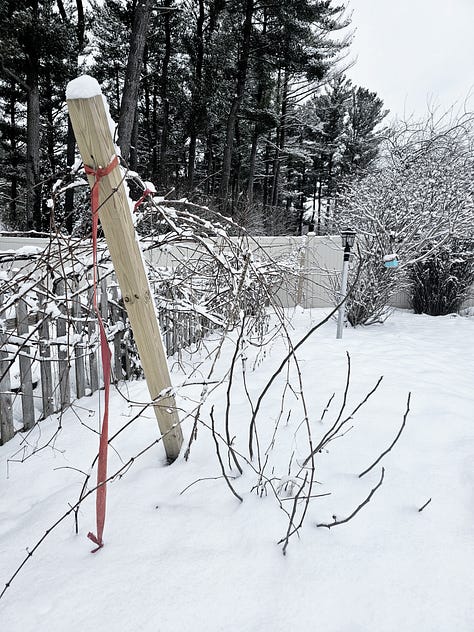
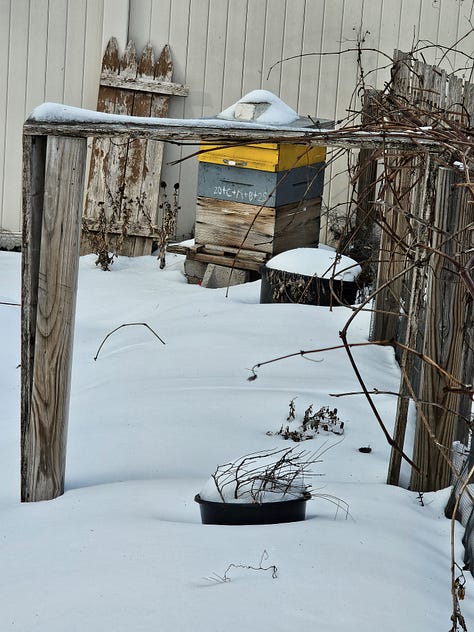
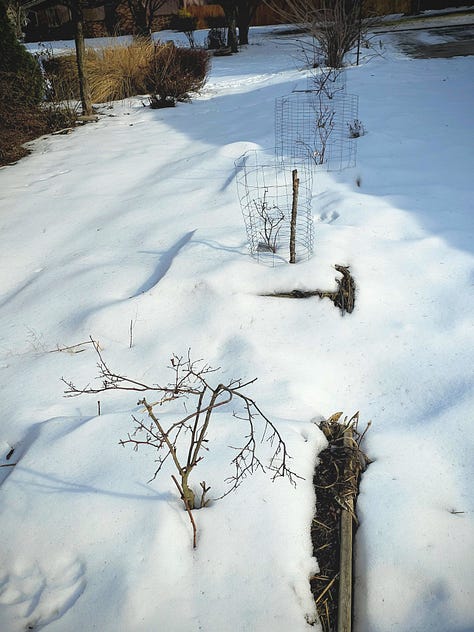

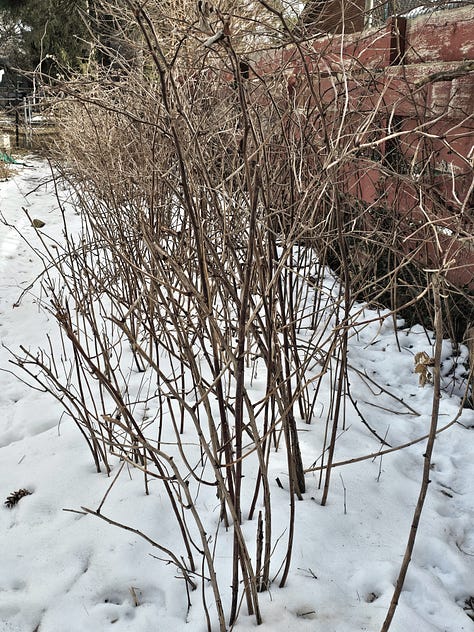
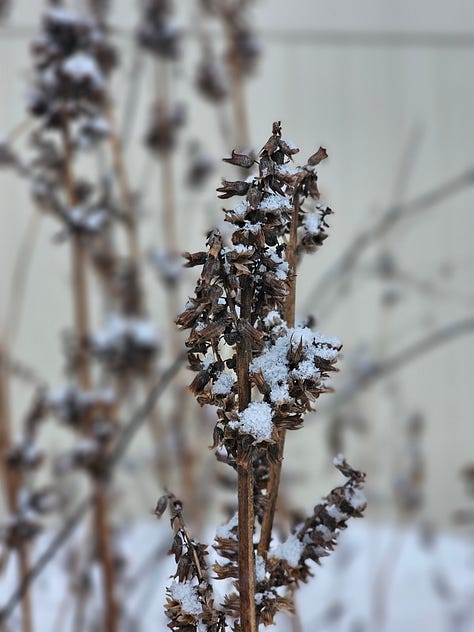


February has brought much snow, which means our dog has been living his best life.
February’s weather has gone something like this: A brief thaw, just enough for green leaves to peep through on Imbolc/ St. Brigid’s Day (Feb. 1) and Candlemas/ Groundhog Day (Feb. 2). Bitter cold the 2nd week, freezing all water that dared to drip; also a goodly amount of snow. Mid-month was for large lovely snowflakes and deep snow, but only after a half-hearted winter storm. Then more and more snow, but also sub-zero temperatures. This week there has been some rain, and much of the snow has melted. We begin and end the month with a thaw.

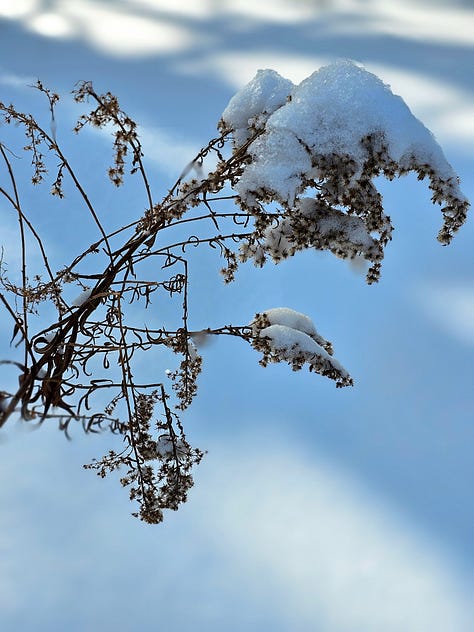
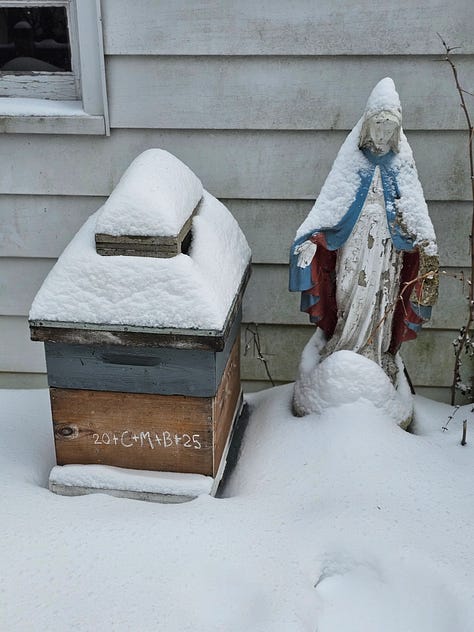
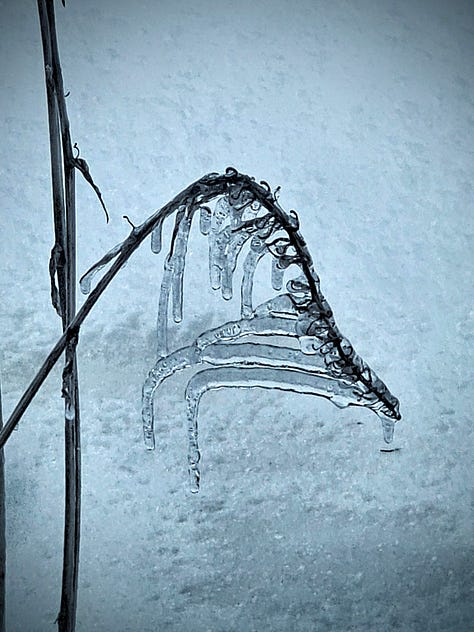
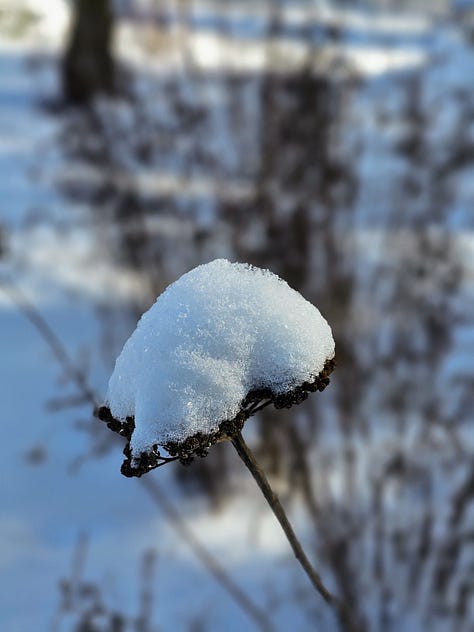
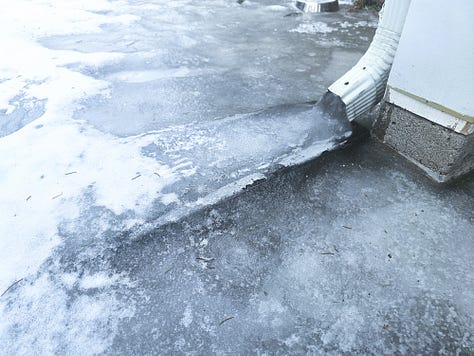
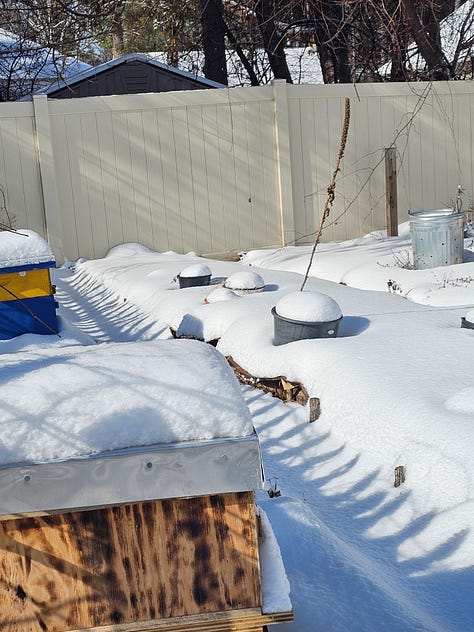

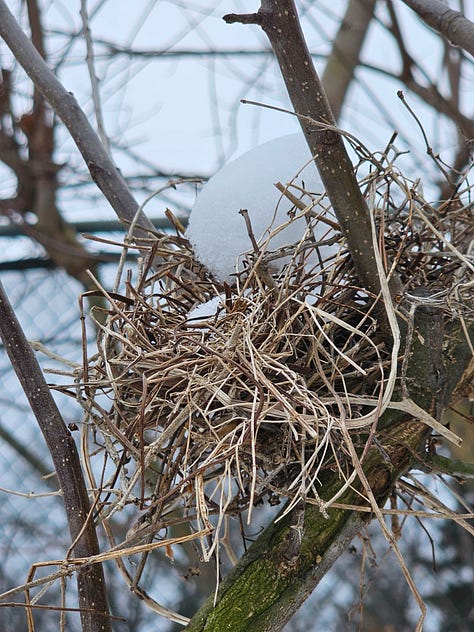
My favorite photo above is the birds’ nest (which I hadn’t previously noticed in the apple tree) with the very strange & fluffy “egg.”
This is the curbside view of our house, with holly bushes and fir tree.
Bee Update
Of the 5 hives that went into the winter, 4 were holding strong until this last cold snap. Now there is only 1 with irrefutable signs of life. I still have some hope for 2 others, but Phillips thinks they’ve succumbed to the bitter freeze. Despite the thaw, it has not reached a high enough temperature to open the hives, even to just check food stores. Opening a hive when it’s below at least 50℉ would risk upsetting the colony’s carefully-maintained temperature, as well as stressing out potential early brood.
Ok, not a pretty picture, but it is a good demonstration of a live vs. likely dead hive. The brown & yellow hive, with all the dead bees in front of it, is the LIVE one. During this past week’s thaw, their undertaker bees were busy removing their dead. When I put my ear to their hive wall today, I was rewarded with the sound of a loud, buzzing hum. If this colony makes it to Spring, I will be shouting all over the internet about their marvelous hive box, a new design from Australia. And I won’t care a fig that it looks like a 2-story beer cooler.
Government Caves
Limestone caves have been in the news this month, courtesy of a certain billionaire whose name slant-rhymes with Xenon (Xe on the periodic table; a tasteless gas). The caves in question are in Pennsylvania, and have housed paperwork for the federal government since the 1960’s. In the underground caverns of this converted mine shaft, 700 federal employees continue to use a paper filing system whose capacity is determined by the mine shaft’s elevator.1 Something to do with the square root of the diameter of a manila envelope multiplied by the weight in milligrams of a regulation cardboard box, divided by the volume of ink in 1 of those pens that get chained to a clipboard, equals the number of retirees for that fiscal quarter. Being Luddite-adjacent, I do mourn the coming loss of such an inefficient but romantic way of doing work. Anyway, you’d think that working in a labyrinth of limestone file rooms would look something like this:
And this is what they do look like:
So I was reminded of an article that
had brought to my attention a few years back, about other limestone government caves, but in Missouri, and filled with cheese. More than a billion pounds of blocks of processed cheese.Government subsidies in the 1970’s encouraged overproduction on dairy farms, as the government became a guarantor of any unsold dairy products. This in itself was a heavy-handed over-correction for dairy shortages and inflationary grocery prices. How best to store milk long-term? Cheese. Not surprisingly, the excess cheese quickly took up space, and would still become moldy. Enter the Reagan administration’s “government cheese” initiative: melt down the cheeses, add preservatives, form them into standardized loaves, and distribute them through schools, welfare programs, and food pantries.2

There is still a cheese surplus, billions of pounds of it, because we’re still funding dairy overproduction. So all that extra cheese is being kept in underground “caves,” which are mainly repurposed mines, at a controlled temperature, waiting for…what? I don’t mind our country saving up cheese for societal apocalypse survival, but the excess milk being produced is used in less conscionable ways, like being dumped into “dairy lagoons” that contribute significantly to greenhouse gas emissions.3
A Cheesy Recipe
Paid subscribers get access to a monthly seasonal recipe, developed & perfected in our family’s kitchen. This month’s recipe is courtesy of our eldest daughter, and is cozy comfort food for winter evenings. No government cheese loaf required.
Keep reading with a 7-day free trial
Subscribe to The Suburb Farm to keep reading this post and get 7 days of free access to the full post archives.


